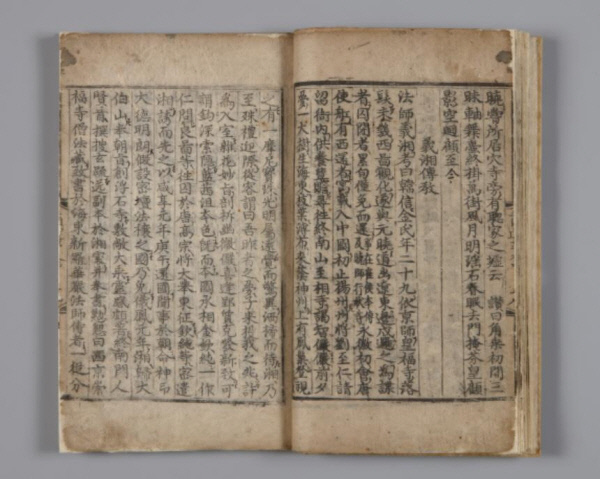Cultural Heritage Administration designates two volumes of ‘Samguk Yusa’ as national treasure
By Song Seung-hyunPublished : Aug. 29, 2020 - 16:01

The Cultural Heritage Administration said Thursday that it has designated two printed volumes of the “Samguk Yusa (Memorabilia of the Three Kingdoms)” as National Treasure No. 306-4.
Volumes No. 4 and No. 5 of the “Samguk Yusa,” a collection of legends and folktales mainly from Korea’s Three Kingdoms (Goguryeo, Silla, Baekje) period and printed using wooden blocks, are currently owned by Beomeosa, a Buddhist temple in Busan. They were originally owned by Beomeosa’s first head monk, Oh Seong-wol (1865-1943), and donated to the temple around 1907, according to the CHA.
The “Samguk Yusa” stories were compiled by a Buddhist monk named Iryeon in 1281 during the Goryeo Kingdom (918-1392). Since there are no remaining printed books from the Goryeo era, the book’s publication date is unknown.
The earliest wood-block printing of the book is estimated to have started in 1394. Volumes No. 4 and No. 5 were printed the same year.
While there are a total of five volumes in the “Samguk Yusa” and the Beomeosa edition is incomplete, the CHA recognizes the two as the earliest extant printed materials from the “Samguk Yusa.”
The volumes are the fourth set of materials from the “Samguk Yusa” to be added to the National Treasure list.
The CHA added that the other two “Samguk Yusa” treasures -- National Treasure No. 306, designated in 2003, and No. 306-3, designated in 2018 -- were published with the Beomeosa edition in 1394. The agency highlighted the Beomeosa edition’s significance by saying that some parts in the Beomeosa edition do not exist in the other two.
The agency said these volumes could also be used to restore the original work by comparing them with National Treasure No. 306-2, published in 1512, to find misspelled words that were corrected in later editions. National Treasure No. 306-2 was designated in 2003.
By Song Seung-hyun(ssh@heraldcorp.com)








![[KH Explains] How should Korea adjust its trade defenses against Chinese EVs?](http://res.heraldm.com/phpwas/restmb_idxmake.php?idx=644&simg=/content/image/2024/04/15/20240415050562_0.jpg&u=20240415144419)











![[Today’s K-pop] Stray Kids to return soon: report](http://res.heraldm.com/phpwas/restmb_idxmake.php?idx=642&simg=/content/image/2024/04/16/20240416050713_0.jpg&u=)